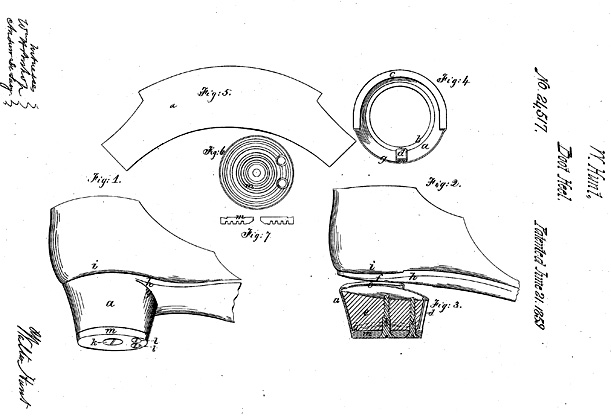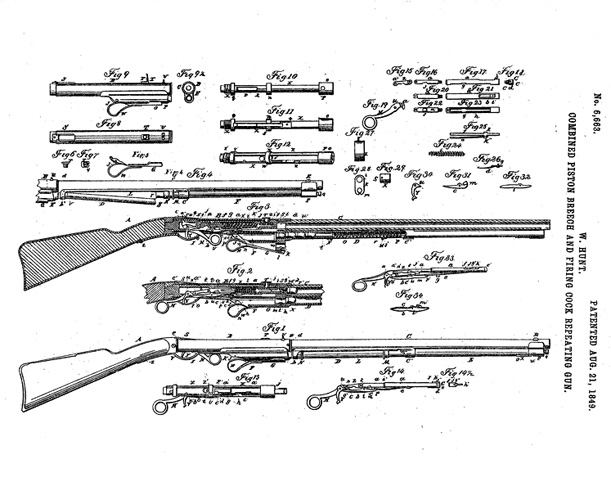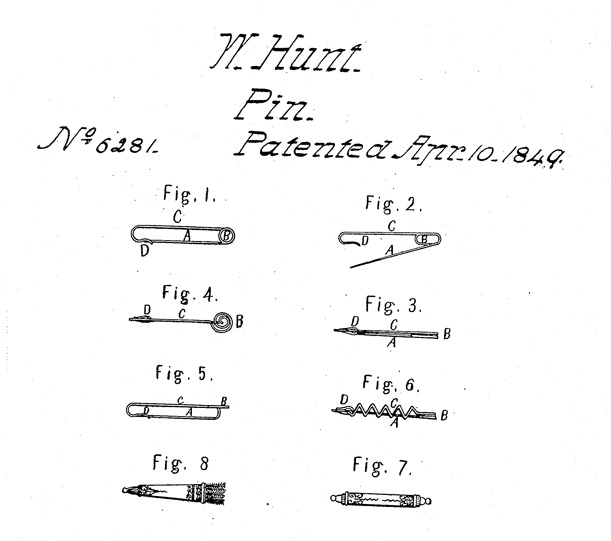The Inventive Mind of Walter Hunt, Yankee Mechanical Genius
The compulsively creative Hunt might be the greatest inventor you’ve never heard of
/https://tf-cmsv2-smithsonianmag-media.s3.amazonaws.com/filer/20131024022048safety-pin-470.jpg)
Walter Hunt (1785-1859), a 19th century engineer and machinist, was only a bit player in the history of the sewing machine but he was a prolific “Yankee mechanical genius” who had a penchant for invention and innovation. Unfortunately for him, he was also a Yankee business dunce. Well, that’s not entirely fair. He was reportedly a benevolent man who believed in helping others over making a profit. But his business acumen was lacking and he rarely had the capability to do more than sell the rights to his designs for much less than they were worth. Hunt’s hundreds of inventions include a saw, a steamer, ink stands, a nail-making machine, a rifle, a revolver, bullets, bicycles, a shirt collar, a boot heel, and a ceiling-walking circus device. Some of these items are still in use today and though Hunt’s name is not well known, his creations are.

Walter Hunt’s patent for “new and useful improvement” to the fountain pen. Hunt writes in his patent: “The objects aimed at by me in the construction of said pen, is the combination of all in one of inkstand, pen, shaft, and pen holder, so arranged as to be convenient for the pocket, and adapted to the common steel pen, to be changed at pleasure, to be supplied from the combined fountain or from the common inkstand.”
Hunt designed the safety pin (top image) in three hours to settle a $15 debt to one of the many draftsman he tasked with drawing up his patents. Similar pins had existed for ages but nothing so efficient, made from just a single piece of wire. The draftsman, J.R. Chapin, later paid Hunt $400 for all the rights to every variation of twisted wire than Hunt could think up.
Hunt also played an early but critical role in the successful development of the American Arms industry. His 1849 design for a “Volitional Repeater” rifle made clever use of several other recent discoveries in repeating mechanisms, breech loading and bullets. While it was a brilliant display of innovation, it was also prone to failure. In characteristic fashion, Hunt sold his design to entrepreneur George Arrowsmith. Soon after, the design went into production by the Robins and Lawrence Arms Company, where three men worked on improvements to the firing mechanism: Benjamin Tyler Henry, Horace Smith and Daniel B. Wesson. Thanks to Hunt’s faulty design, the partnership of Smith & Wesson was born. In 1855, an arms conglomerate directed by Oliver F. Winchester bought out Smith & Wesson’s company among other purchases, eventually forming the New Haven Arms Company, which produced one of the most fearsome weapons of the Civil War: the Henry repeating rifle. None of it would have happened without Walter Hunt’s volitional repeater.

Walter Hut, Patent No. 24,517 (June 21, 1859) for “a new and useful Method of Constructing and Attaching the Heels of Boots and Shoes.” This wasn’t Hunt’s only foray into footwear. He also designed suction-cup shoes allowing circus performers to walk up walls and across ceilings!
Hunt is sometimes called the man who gave away a fortune — an appellation that could apply for a number of reasons. The images included in this post are only a very few of Hunt’s many designs. There’s little doubt that he was not a particularly gifted businessman who was constantly in debt, spending all his money on patents and other costs related to his almost compulsive inventiveness. Nonetheless, he seems to have truly been a man who enjoyed the process of creation over reward and riches, though he ultimately did okay for himself thanks to his various designs for bullets and casings. Hunt could’ve been another Edison, but he didn’t have the discipline. Instead, he spent his life in the shadow of men like Oliver Winchester and Elias Howe. And sadly, that is how he spends his death as well. I haven’t been out to pay a visit to Hunt’s grave yet, but according to the comprehensive sewing history website Sewalot, Hunt’s grave, which is not entirely immodest, can be found in the shadow of the much larger burial monument of Elias Howe.
Walter Hunt’s 1849 patent for bent wire “dress pins”. As Hunt writes in his patent, “The distinguishing features of this invention consists of the construction of a pin made of one piece of wire or metal combining a spring, and clasp or catch, in which catch, the point of said pin is forced and by its own spring securely retained. They may be made of common pin wire, or of the precious metals.”
/https://tf-cmsv2-smithsonianmag-media.s3.amazonaws.com/accounts/headshot/Jimmy-Stamp-240.jpg)


/https://tf-cmsv2-smithsonianmag-media.s3.amazonaws.com/accounts/headshot/Jimmy-Stamp-240.jpg)